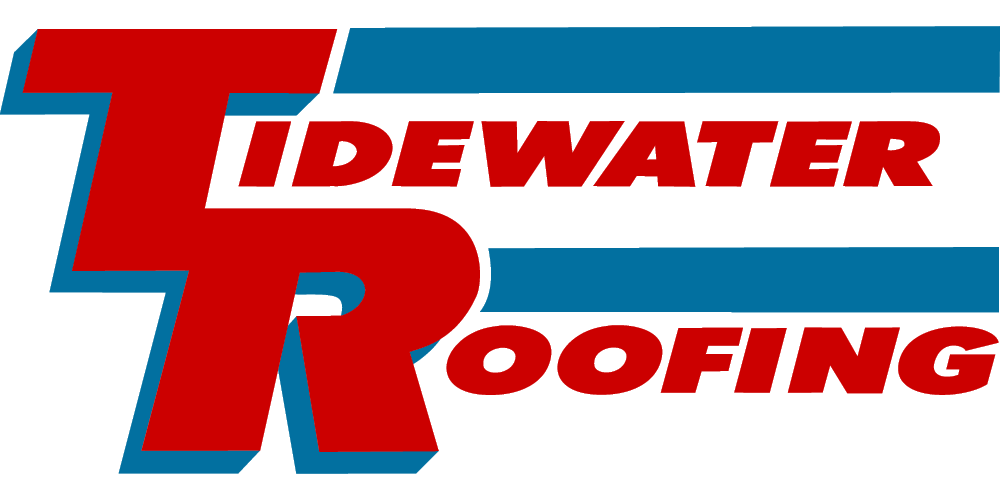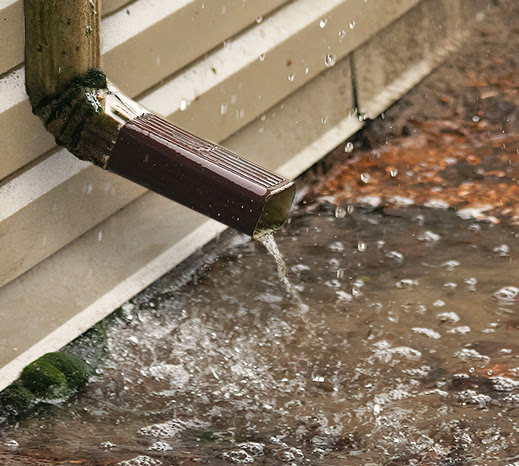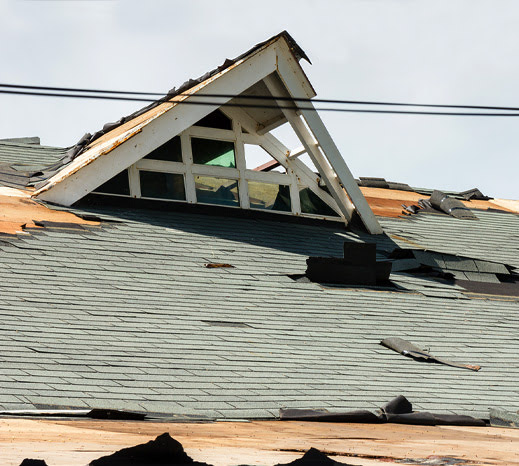Advice For Homeowners, Residential Roofing
Tidewater Roofing has completed over 100,000 jobs since we were founded in 1982. Let us show you the different types of residential roofing so that you can determine which type will be best for your needs as a homeowner.
...
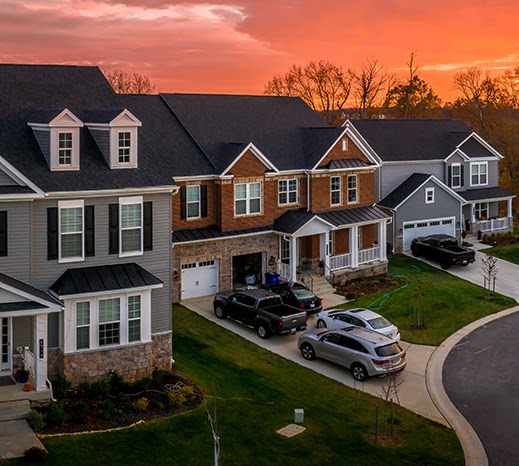
When you’re deciding what type of residential roofing you’ll use, consult an expert. You want to make sure your selections will perform! There may even be some options new to the market in your area. With our list and knowledge, you’ll be able to choose the best route to take for your new construction home or replacement.
Next Steps:
- Roof Replacements
- Top-Quality Shingles
Table of Contents
- Types of Roofs
- Roofing Materials
- Roof Vents
- Roof Insulation
- What Type of Shingle is Best?
- Influential Factors
- Informed Decision-Making
- FAQ
What Type of Roof Does Your Home Have?
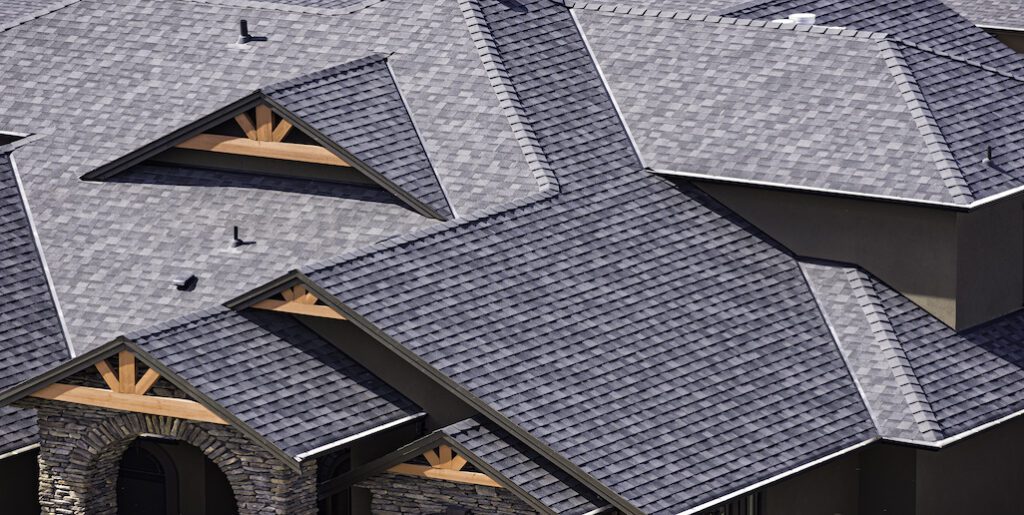
There are three basic types of roof structures for homes in Virginia: gable roofs, hip roofs, and flat roofs.
Residential Gable Roofs
Gable roofs are the most common type of roof structure in the United States. They’re simple to construct and provide good attic ventilation.
A gable roof is a roof with two sloping sides that come together at a ridge in the middle of the roof. Think of a classic A-frame. The two sloping sides are called “pitches.” Gable roofs are the most common type of residential roof in the Hampton Roads area.
Residential Hip Roofs
Hip roofs are more complicated to build than gable roofs, but they’re more resistant to wind damage and provide better attic ventilation.
A hip roof is a roof with four sloping sides. These roofs look like a pyramid. Hip roofs are more resistant to aggressive winds because of the slope on all 4 sides.
Residential Flat Roofs
Flat roofs are the least common type of residential roof structure in the United States, but they’re easy to construct and maintain. Flat roofs are more common in commercial buildings and industrial structures.
A flat roof is a roof with a single, flat surface. These types of roofs are more susceptible to standing water and snow build-up.
What is a Roof Slope? How Does it Affect My Home’s Roof Design?
The roof slope (or roof pitch) is the angle of the roof surface relative to the horizontal plane. It’s usually expressed as a ratio, such as 4:12 (the roof rises four inches for every 12 inches it extends horizontally). The roof slope affects the design of the roof, the amount of attic space, and the amount of headroom in rooms with cathedral ceilings.
Roofing materials are generally categorized by their pitch range. Here are some examples:
- Asphalt shingles are typically used on roofs with a pitch between 2/12 and 4/12.
- Metal roofing can be used on roofs with a pitch between 4/12 and 12/12.
- Tile roofing is typically used on roofs with a pitch between 3/12 and 8/12.
- Slate roofing can be used on any pitched roof.
What Are the Different Roofing Materials for Residential Roofing?
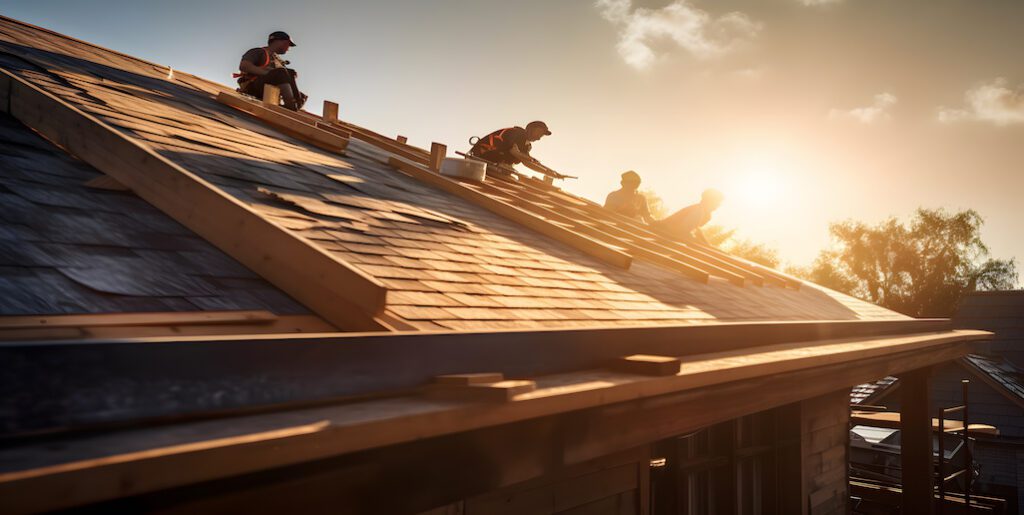
Since the vast majority of homeowners in North America have gable or hip rooftops, we’re going to focus on the materials used for those. When it comes to residential roofing shingles, the most common kinds are asphalt, rubber, and slate. Alternative options include metal, wood shakes, and tile.
Asphalt Shingles
Asphalt shingles are the most common roofing material in the United States. Manufacturers produce them by coating a fiberglass or paper mat with asphalt and ceramic granules. These shingles come in a variety of colors and styles.
These shingles are lightweight and generally easy to install. There are also several different types of asphalt shingles available, including:
- 3-tab asphalt shingles: single layer and cost-effective, these shingles are usually considered the most basic option—but they’re also more susceptible to wind damage.
- Architectural shingles (also called dimensional shingles): two layers in their manufacturing make them more durable and provide a look similar to slate or wood. These are the most popular choice for shingles in America.
- Luxury asphalt shingles: heavier than other asphalt materials and most resistant to tearing away in storms and wind. Luxury asphalt shingles are less expensive than slate or metal roofing.
Rubber Shingles
These shingles are made from recycled tires and are available in a variety of colors. Rubber roofing is durable and easy to install, but it’s not as popular as asphalt shingles—some people just don’t like the way it looks.
Slate Shingles
Slate roofing is a natural roofing material that’s made from slate rock. It is extremely durable and low-maintenance, but it’s also much higher in cost than asphalt shingles.
Because slate roofing is heavier than most other materials, some homes’ roofs will not be able to support this type of shingle without reinforcing the structure. This can add to the overall costs.
Metal Roofing
Another popular roofing material is metal. Metal roofing is available in steel, aluminum, and copper. It’s durable and low-maintenance, but it can be 2-3 times as expensive as asphalt shingles.
Wood Shakes
Shingles made of wood are long-lasting when maintained, and give a specific rustic look to your home. Wood shakes will expand and contract with different weather conditions.
Tile Roofing
Tile roofing is a popular choice for homes with a Mediterranean or Spanish-style design, made from clay or concrete tiles. It is durable and low-maintenance, but it’s also more costly due to materials and installation labor.
What About Roof Vents? Are There Different Types?
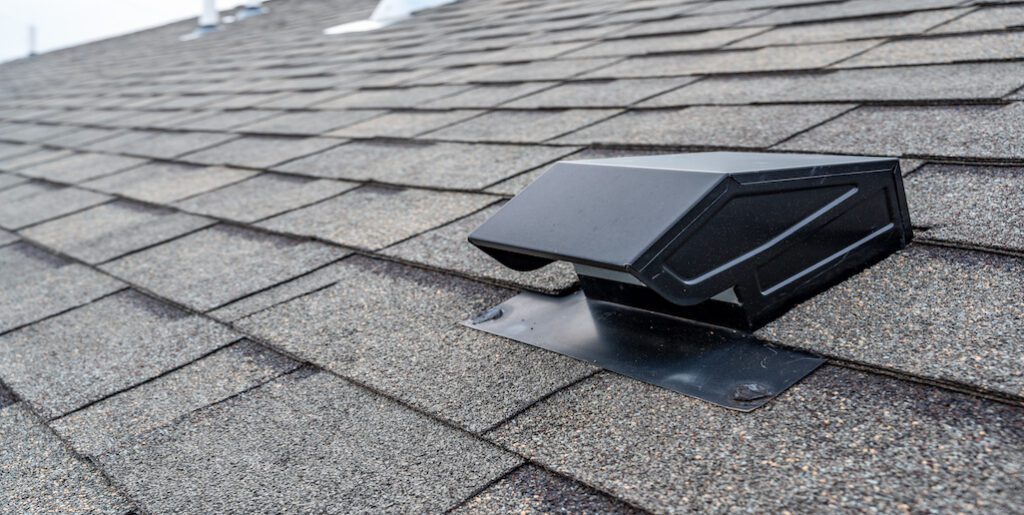
Your roof ventilation options will depend on the type of roof you have. Ridge, soffit, gable, and roof turbines are all common types of roof vents.
Ridge Vents
These vents are installed along the ridge of the roof and allow hot air to escape from the attic.
Soffit Vents
Soffit vents are installed in the soffits (the space between the roof and the exterior walls) and allow cool air to enter the attic.
Gable End Vents
Gable end vents are installed in the gable ends (the triangular portion at the end of the roof) and allow hot air to escape from the attic.
Roof Turbines
Roof turbines are small fans that are installed on the roof and help to ventilate the attic.
Insulation for Residential Roofing
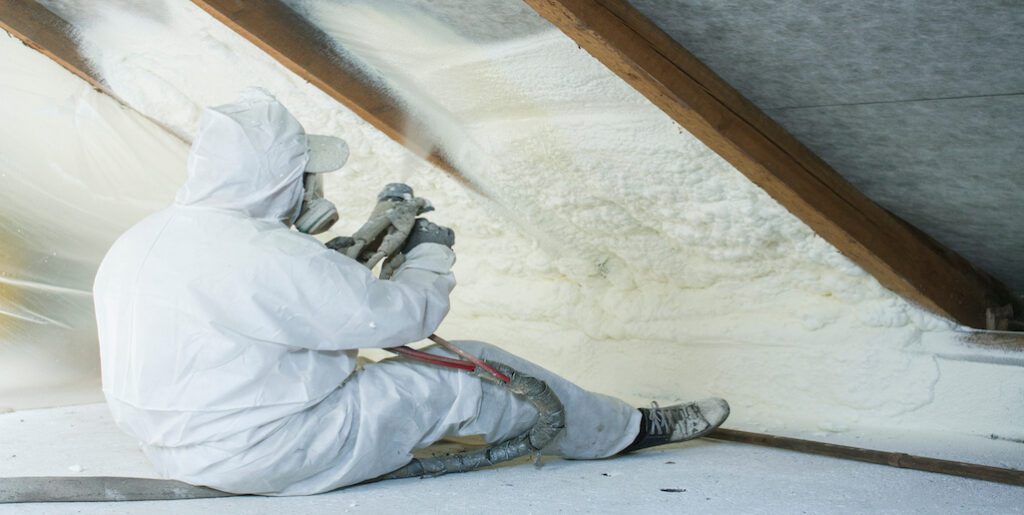
You’ve also got different options when it comes to selecting a type of roof insulation. Each has its pros and cons, and it comes down to your roofing needs and the climate you live in.
Insulation is placed directly under your sloped roof. The effectiveness of insulation is measured by R-value, the insulation sheet’s ability to resist heat flow. The higher the R-value, the better the insulation.
Fiberglass Insulation
Fiberglass batts are the most common type of insulation. Manufacturers weave fiberglass fibers into a mat using recycled glass. These batts come in a variety of R-values, widths, and thicknesses.
Cellulose Insulation
Manufacturers create cellulose insulation from recycled paper products, treat it with fire retardants and insecticides, and offer it in loose-fill and batt forms. Cellulose insulation has a higher R-value than fiberglass insulation, and a higher price.
Spray Foam Insulation
Spray foam insulation is made from polyurethane and is available in two types: closed-cell and open-cell. Closed-cell spray foam has a higher R-value than open-cell spray foam. This insulation works great but costs more than the alternatives.
What Type of Shingle is Best for Your Home?
Finding the “best” roofing materials is a matter of what your roofing needs are as well as your priorities and budget. No one type of roofing serves all homes or homeowners the same.
Ask yourself what is most important: Price? Durability? Environmental impact? Each residential roofing material has its benefits.
Most energy-efficient roofing material?
In most cases, the most energy-efficient roofing materials are metal and tile roofing. Metal roofing doesn’t absorb and radiate heat like an asphalt product, which helps to keep your home cool in the summer. Tile roofing is a natural insulator, which helps regulate temperatures inside your home.
What roofing materials are the most durable?
The most durable roofing materials are metal, slate, and rubber roofing. Metal roofing is impervious to fire, rot, and pests. Slate roofing is extremely durable and can last for many years. Rubber shingles can withstand large hail and other inclement weather.
What is the most affordable roofing material?
Asphalt shingles are the most cost-effective for replacing or installing a roof. Even architectural asphalt shingles are more affordable than other roofing materials.
What’s the most low-maintenance roofing material?
Metal roofing and asphalt shingles are both relatively low-maintenance options. Metal roofing is available in a variety of finishes that don’t require painting or staining. Asphalt shingles are easy to install and are generally just replaced if they incur damage.
What roofing material is the most fire-resistant?
Tile, slate, and metal roofing are all very fire-resistant roofing materials. Metal roofing is non-combustible and will not ignite in the event of a fire. Tile and slate shingles are also non-combustible and have very high fire ratings.
What roofing material is the most wind-resistant?
Great choices for areas with strong winds are metal, tile, rubber, and slate roofing. Metal roofing comes in a variety of profiles designed to resist high winds. Because of their weight, tile and slate shingles are hard to displace. Rubber shingles do not easily bend and resist wind uplifts.
What roofing material is the most eco-friendly?
The most eco-friendly roofing materials are metal roofing and wood shingles. Manufacturers create metal roofing from recycled materials, and it is 100% recyclable. Wood shakes, made from all-natural materials, can be sustainably reused after serving as roof shingles.
Influential Factors
When making your final selection for a roofing material, there are several influential factors that come into play including:
Cost
Cost is one of the main sources of concern when considering a new roof, whether a replacement or new construction. As mentioned previously, asphalt shingles are the most cost-effective for replacing or installing a roof. But you may want the long-term savings that a metal roof has the potential to give.
Climate
Extreme weather conditions such as heavy rainfall, snow, or intense heat can all impact the performance and lifespan of your roof. In Virginia, our extreme weather conditions come in the form of severe snowfalls or frequent storms. With this information, it’s important to go for materials that have high wind and impact resistance such as architectural or rubber shingles. Slate, on the other hand, withstands colder climates without warping.
Aesthetics
Of course, you want your roof to look nice. The appearance of your roof is an important necessity to the overall curb appeal of your home. This is where you must think about color, texture, and how to blend it with the architecture of the rest of your home.
Informed Decision-Making
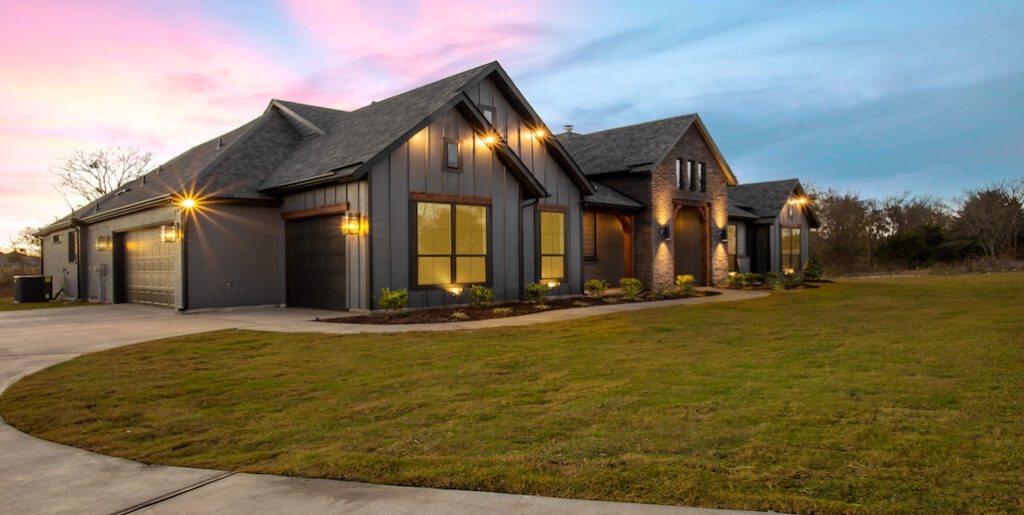
When it’s time to replace your roof at home, there are lots of options when it comes to selecting shingles, vents, and insulation. There are a variety of roofing materials available for residential roofs, each with its own benefits and drawbacks.
Making decisions about your residential roofing is always easier with the guidance of a professional roofing contractor. Tidewater Roofing in Hampton Roads helps homeowners get the most value out of their new roof with the materials that will keep them protected for years to come.
Give Tidewater Roofing a call for an assessment and quote on your new residential roof. We will walk you through your best options and lay out all of the pros and cons of the material you choose as well as the upfront and long-term costs.
Frequently Asks Questions about Residential Roofing
How often should I have my roof inspected?
Experts recommend inspecting your roof at least once a year. Regular inspections help prevent breakdowns or damage that severe weather could otherwise cause. It’s also important to have your roof checked after big weather events in case there is unseen damage.
What is the lifespan of a typical residential roof?
The lifespan of a residential roof depends on the materials used. For example, asphalt shingles typically last around 20-30 years. Better maintenance will extend the life of whatever materials you choose.
What maintenance should I perform to keep my roof in good shape?
You should perform several maintenance tasks to extend your roof’s lifespan and prevent the need for major repairs. This includes:
- Routine inspections from professionals
- Check for leaks in the attic or top floor of the home
- Ensure strong insulation
- Remove moss, mold, and snow
- Keep your gutters clean
- Trim back trees
What signs indicate I need to replace my roof?
Watch for these signs if you’re concerned about needing a roof replacement, including:
- Leaks of water or light in the attic
- Water stains on ceilings
- Visible wear & tear or warping/curling
- Granules are in your leaf-free gutters
- Missing or damaged shingles
- Dark streaks across your roof
- Roof is 20-30 years old
What are the most common roofing materials?
Common residential roofing materials include asphalt shingles, rubber shingles, metal roofing, wood shakes, slate, and tile. Each material has its own advantages and considerations.
How much does a new roof cost?
There are several factors that go into calculating the cost of a new roof including materials, size of the roof, labor, and the structure of the roof itself. Make sure to contact Tidewater Roofing for an assessment and quote on your new residential roof.
